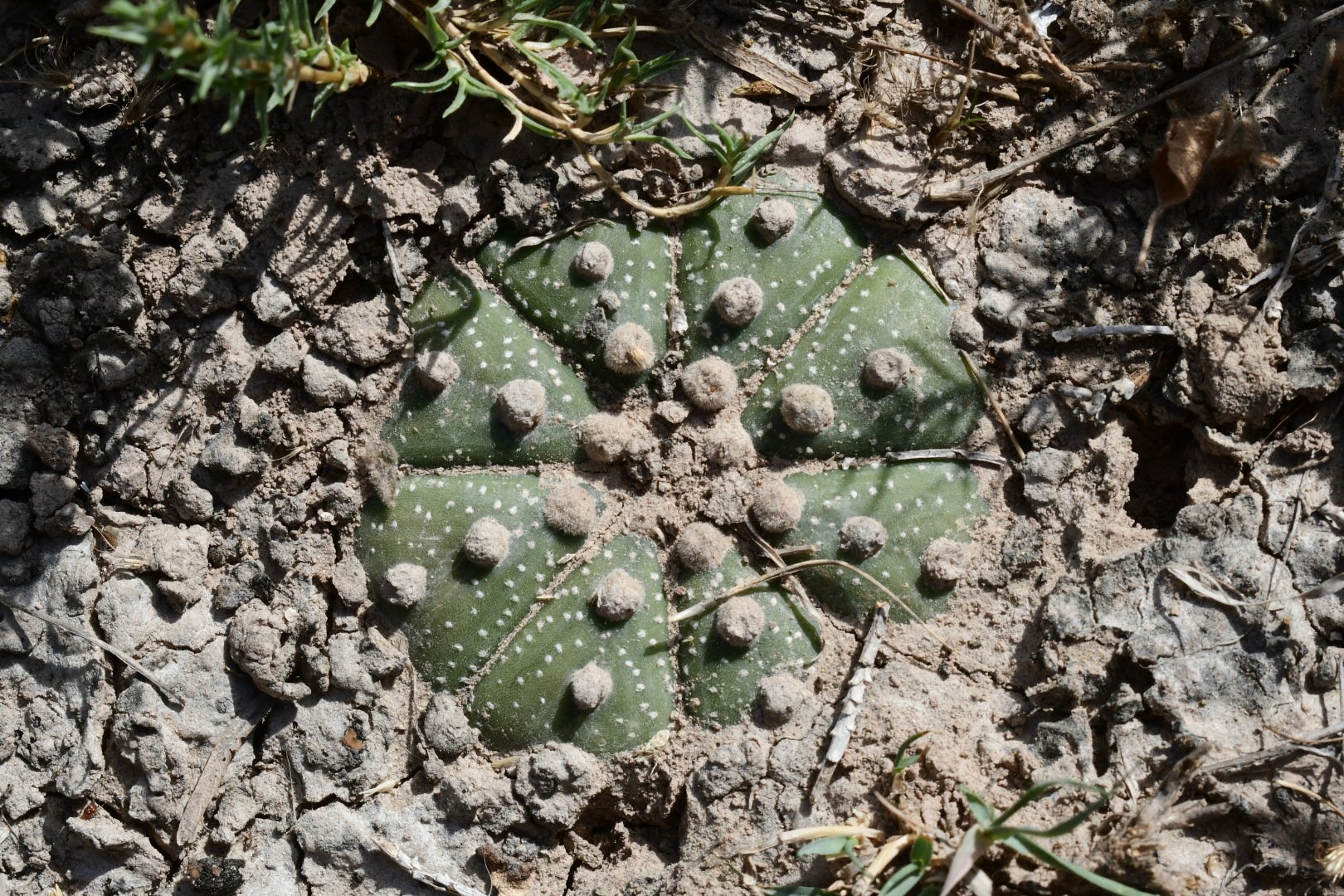Masters of Obscurity : Astrophytum asterias
Astrophytum asterias, also known as the sand dollar cactus or star cactus, is probably one of the most fascinating as well as the most threatened plants that grows within the United States. Its populations have been declining due to habitat loss as well as drought. Plants are obligate out-crossers and unlike Peyote, which they sometimes can be found growing next to, Astrophytum tends to grow rather exposed, only sometimes being partially shaded and protected by the succulent, suffrutescent member of Asteraceae known as Varilla texana (one of two species in the genus Varilla), which is an equally mysterious plant that occupies the same open, exposed gravel beds and often very salty soil. Astrophytum asterias extends down into Southern Tamaulipas, Mexico, growing in scattered populations in similar habitat. Little is known about the Southern populations.
Most interesting about this plant, the plant tends to recess almost entirely into the soil (if you can call this substrate that) that it grows in, sometimes only partially exposed. This makes surveying for it akin to a game of Where’s Waldo. Sadly, this plant is not as protected as it should be, and as the region that it grows in continues to suffer from development (lots of land clearance, as more people move here from Hidalgo and Cameron County, further East, to build their tacky “dream ranches” and McMansion-style architectural atrocities. Texas property taxes and agricultural exemptions tend to incentivize land clearance, which - when added to the fact that this grows in a region where so many are ignorant of or uncaring of the region’s incredible flower and ecology - has doomed many plant populations such as Astrophytum as well as Peyote.













